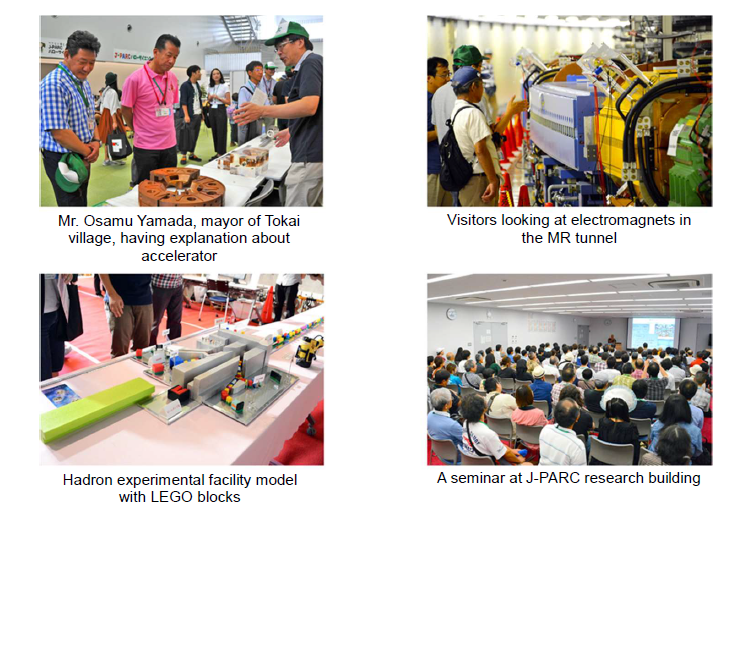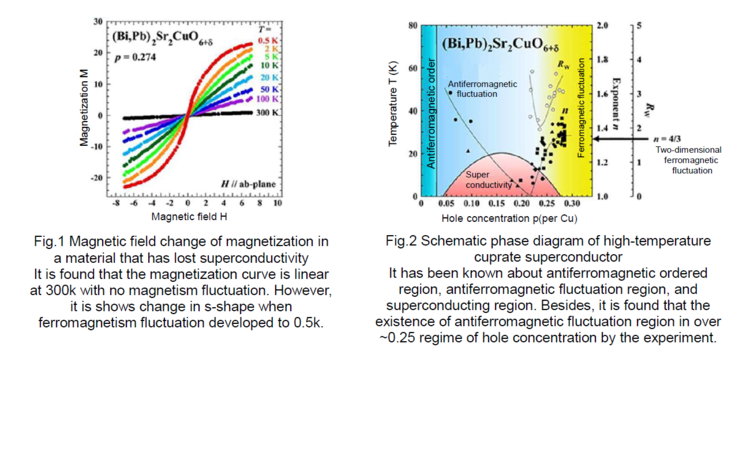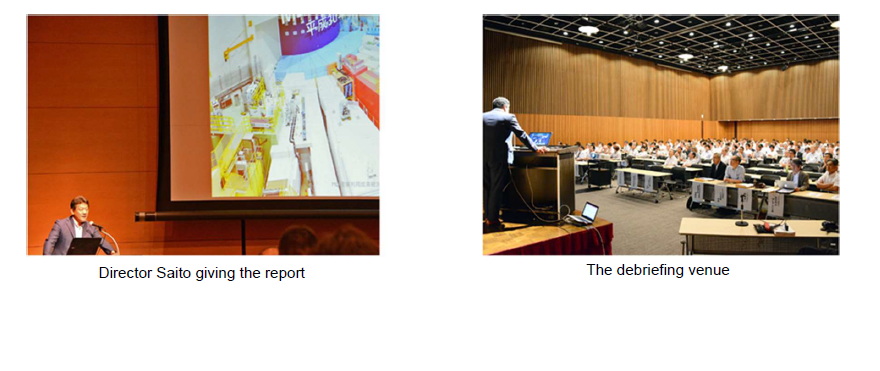J-PARC NEWS August 2018 (Issue #160)
■The world's first observation of two-dimensional ferromagnetic fluctuation in a high-temperature superconductor made of a copper oxide - Full picture of a high-temperature superconductor in magnetic state unraveled - (August 3, press release)
In a high-temperature superconductor made of a copper oxide, superconductivity occurs if holes or electron carriers are injected into the mother material, which is an antiferromagnetic insulator. However, it was unknown why superconductivity is lost if more carriers are injected further. Recently, a research group led by Professor Tadashi Adachi of Sophia University observed two-dimensional ferromagnetic fluctuation in copper oxide into which a large amount of holes are injected, for the first time ever, in joint research* with organizations such as the J-PARC Center. This means that the magnetic state changes from antiferromagnetic to ferromagnetic as carriers are injected, and unraveled the full picture of a copper oxide in a magnetic state. This result is an important finding that indicates anew the involvement of ferromagnetic fluctuation in high-temperature superconductivity. Details of this finding were published online in "Physical Review Letters," a physics journal in the United States, on August 1, 2018.
* RIKEN's RAL and the Materials and Life Science Experimental Facility's muon D1 experimental equipment are used.
■ Inside of material viewed with negative muon elementary particles - A long-held dream coming true with a negative muon beam with the world's fastest counting speed - (August 24, press release)
A joint research group, consisting of members such as Jun Sugiyama, Supervisor at Toyota Central R&D Labs., Inc., Koichiro Shimomura of the Muon Section (KEK), and Wataru Higemoto (JAEA), succeeded in observing a minute magnetic field of hydrogen in a hydrogen compound and its fluctuation for the first time ever, by focusing on the fact that muon (μ-), an elementary particle having a negative charge, is captured by an atomic nucleus other than that of hydrogen and does not move in material, and performing measurement of negative muon spin rotational relaxation (μ- SR). This means that a dream long held by muon researchers came true for the first time by combining J-PARC's highly intense negative muon beam with a multi-element detector. Since it has now become possible to detect the movement of hydrogen in a solid, the development of a high-performance hydrogen-storing material seems promising. The finding of this research was published with the title: "Editors' Suggestions, Featured in Physics" in Physical Review Letters in the United States on August 21.
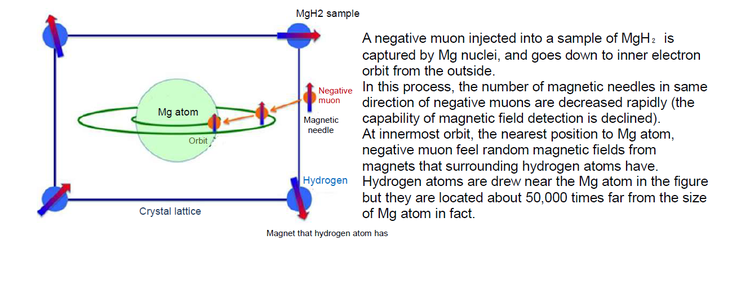 ■Debriefing on the industrial use of J-PARC MLF in fiscal 2018 (July 23 through 24, Akihabara Convention Hall, Tokyo)
■Debriefing on the industrial use of J-PARC MLF in fiscal 2018 (July 23 through 24, Akihabara Convention Hall, Tokyo)
A debriefing on the industrial use of the Materials and Life Science Experimental Facility (MLF) was held on July 23 and 24 in Tokyo, and over 300 people from government, industry and academia visited the venue. At a commemorative session celebrating the 10th anniversary of the inauguration of the Industrial Users Society for Neutron Application, which was launched at the same time as MLF user operation has been started, vice-president Etsuhiko Shoyama, who is among the promotors, expressed his thoughts. Naohito Saito, Director of the J-PARC Center, reported the present state of the adoption of more than 500 proposals so far on the industrial use and the successful stable operation of MLF for approximately one hour at a beam power of 1 MW in early July. At a special seminar, Dr. Gen Murakami of Hitachi, Ltd., who represented industry, explained the successful case of the development of an "amorphous motor" based on the visualization of the magnetic field of an operating motor. This finding won the Prime Minister's Award, which was the highest award in the "47th Japan Industrial Technology Grand Prize," sponsored by the Nikkan Kogyo Shimbun, Ltd.
■3rdJ-PARC Media Gathering (August 3, J-PARC)
On August 3, a media gathering intended to introduce cutting-edge research activities conducted at the J-PARC Center was held for various mass media. A total of eight journalists representing four media in and outside Ibaraki Prefecture, participated in the gathering, and were provided with an explanation of the present status of the Center's research activities such as those related to fuel cells, new material for tires, geoscience and a T2K experiment by Naohito Saito, Director of the Center. Subsequently, the journalists toured the accelerator facilities and the experiment facilities. The Center specially unveiled the accelerator's linac and main ring, which can be entered only during the maintenance period in summer, and the participants listened to the explanations provided at the sites and enthusiastically took notes the whole time.
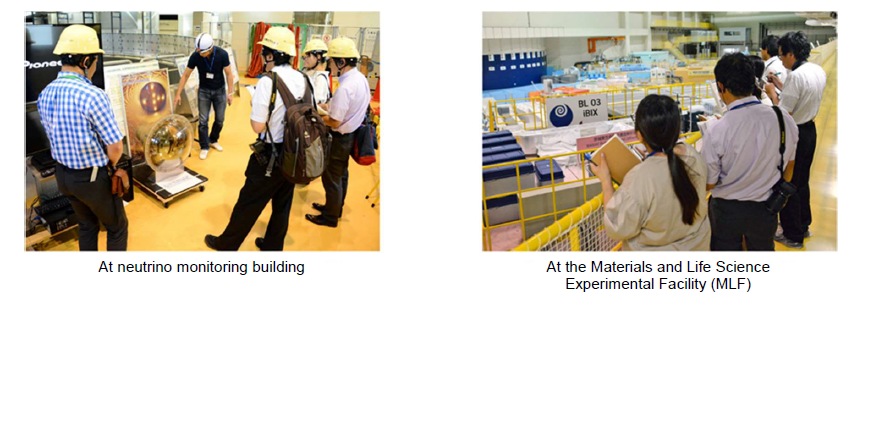
■ J-PARC runs a booth "Eco Accelerated with J-PARC" at Eco Festival Hitachi 2018 (July 21, Hitachi City)
J-PARC ran a booth at Eco Festival Hitachi 2018, which was held on July 21 at the Hitachi Civic Center, and introduced its research activities. J-PARC explained its facilities, and exhibited Sumitomo Rubber Industries, Ltd.'s high-performance tire with improved anti-wear performance, which was launched in 2016 as a tire product using MLF's neutron beam. In addition, at a superconductive coaster experiment, many children excitedly worked on a scientific experiment in which a superconductor cooled with liquid nitrogen ran through a slope arranged with magnets, despite extremely hot weather.
■J-PARC Hello Science: a Topic on Superconductivity - Manipulating a Beam Using a Super Powerful Electric Magnet - (July 27, Tokai Industry and Information Plaza "iVil")
In the July Hello Science event, 21 people consisting of families of elementary school students on their summer vacation, as well as regular customers, participated. At this month's Hello Science, Dr. Masami Iio of the Low Temperature Section, who developed a superconductive electric magnet of the neutrino beam line, served as the lecturer and talked about superconductivity. In the first half, Dr. Iio explained the principle of the accelerator and the roles of the dipole electromagnet and the quadrupole electromagnet, and then explained that J-PARC had developed a combined electromagnet using a superconductor in order to bend more forcefully the high-energy proton beam from the main ring in the primary beam line of the neutrino experimental facility. If a superconductor is cooled to a very low temperature, the electric resistance will fall to zero and a powerful magnetic field will be created. A coaster experiment in which the participants experienced such intriguing behavior of a superconductor was also conducted. * A superconductor cooled by liquid nitrogen floats by the repulsive force with magnetism of a magnet (Meissner effect), part of the magnetism enters the inside (pinning effect), and the superconductor does not fall off from the rail as a result.

■J-PARC Center's outreach activity (Tokyo, Oarai WAKU-WAKU Science Museum, and Tokai Library)
J-PARC Center conducts "J-PARC Hello Science - Scientific Experiment Class" at schools, libraries and other facilities, with the aim of encouraging children to become more interested in science. In August, during school summer vacation, the Center held the events on the theme of light, accelerator, and energy: 1) an experiment on the wonder of light and a gauss accelerator on "Kids Kasumigaseki Tour Days" (August 1 to 2, former Education Ministry building), 2) a delivery class "Light Kaleidoscope Workshop" in a summer vacation event at the Oarai WAKU-WAKU Science Museum (August 4, Oarai WAKU-WAKU Science Museum), and 3) a "Summer Vacation Scientific Experiment Class" intended to encourage elementary school fifth to sixth graders in Tokai Village to think about energy change (August 22, 24 and 28, Tokai Library). The three events were all enthusiastically received.
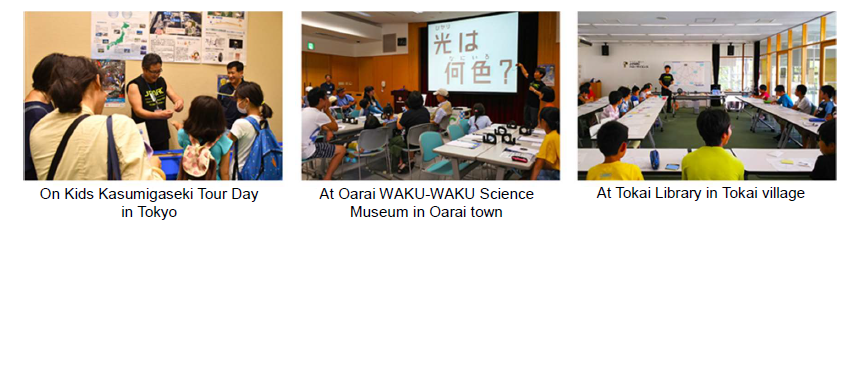
■2018 opening of J-PARC's facilities to the public (August 19, J-PARC)
On August 19, we conducted the 2018 opening of J-PARC's facilities to the public. Favored by good weather, approximately 1,500 people from the prefecture and other areas visited the facilities. The visitors, who carried a tour guidebook, observed facilities that are usually inaccessible such as accelerators in a tunnel and experimental facilities. As in the past, this year we held several events simultaneously such as a seminar on J-PARC's cutting-edge research activities, an elementary particle salon where the visitors can feel science more familiar to them in a homey atmosphere, and an MLF science café, and the events were all well received, with some of them having standees. In addition to these, there were a number of experience-based programs such as experiment classes, trial ride on a hydrogen automobile, a superconductive coaster, and a light-based kaleidoscope, and many families with children enjoyed the programs.
